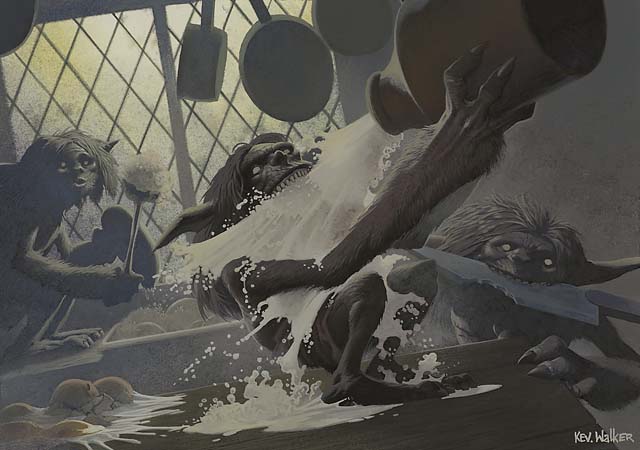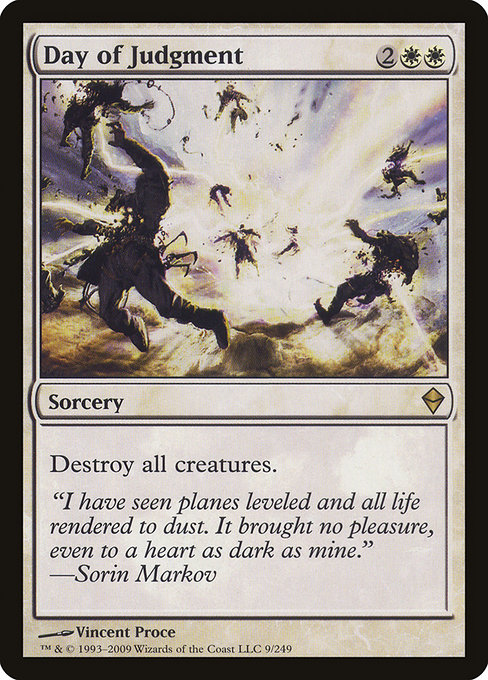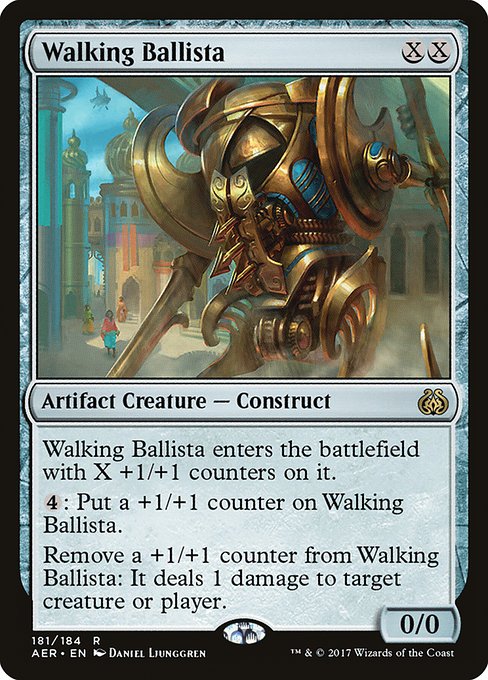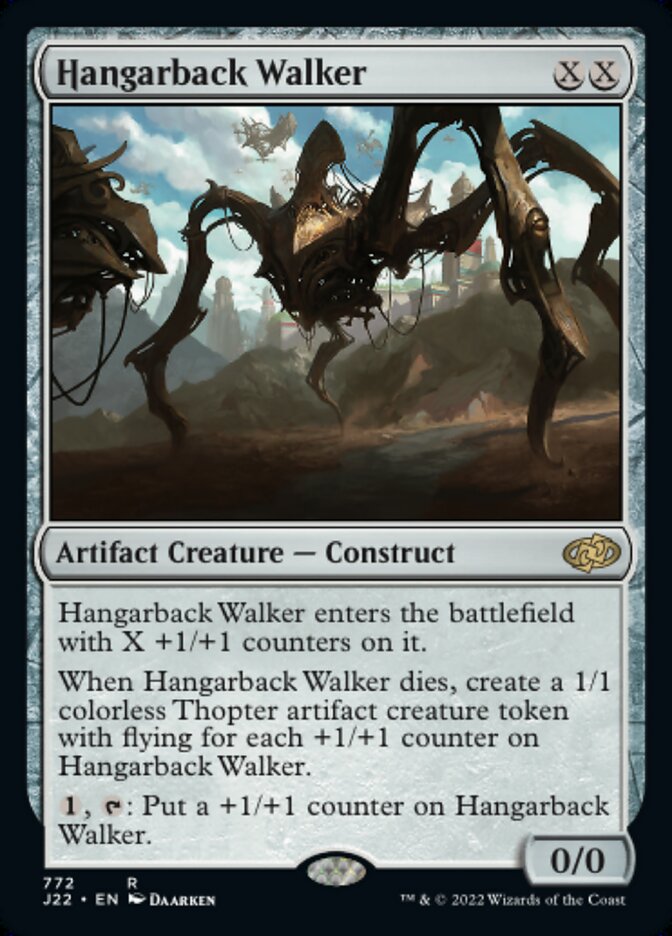Are you a Quiet Speculation member?
If not, now is a perfect time to join up! Our powerful tools, breaking-news analysis, and exclusive Discord channel will make sure you stay up to date and ahead of the curve.
Today's article is a little bit conceptual. It's not filled with hot picks or a super defined finance strategy, but what it does have is a unique perspective for thinking about cards in the abstract that has accidentally been extremely profitable for me over the past several years. Today, I'd like to explain how I stumbled upon this accidental strategy and how I think it could be further refined to be even more focused and repeatable.
The strategy focuses on cards that have a certain "generically good" quality. These are cards that don't have a particular home in an established Constructed format, but have the potential to eventually find a home. The devil is in the details, so let's talk about some contexts that will tie this idea together in a way that makes sense.
Battle Box, Battle Box, on the Wall – Pick Me Winners, One and All...
As you may or may not be aware, several years ago I created a niche casual format called The Battle Box/Danger Room. The premise of this format is fairly simple: it's kind of like Cube, in that it requires a preselected pool of cards that players will play with. The difference is that in Battle Box, each player gets 10 lands that start in exile and can be played once per turn.
The upside is that two players can simply sit down and play interesting games of Magic together without needing to draft or have decks. It's kind of like a Magic: The Board Game experience.
Obviously, the owner of the Battle Box gets to make lots of interesting decisions about which cards he or she will include in the stack. The same way that cube owners labor over each new card added or subtracted from the mix, it's the same feeling to own a Battle Box.
My personal Battle Box is about 700 cards, and I really labor to make sure I make every single one of those cards counts and adds to the overall feel of the games. I like cards that are "generically good," without being too overpowering or obnoxious.
What does that mean? I want every card to feel like a great first pick in Draft, but without crossing a line into Umezawa's Jitte or Inferno Titan territory, where if you can't immediately answer the card the game is just over on the spot. I like flexible cards, fun cards, interesting cards, and flavorful cards.
As it turns out, a lot of other people also tend to enjoy these types of cards, which makes them really, really nice investments – especially when you get in early on them.
Here is what I've observed over the years: every time a new set is released, the first thing I do is look through the spoiler and figure out which new cards I'm excited to add to my Battle Box. There are usually six or seven cards that look like they'd be really fun to play with among the random mish-mash of sweet cards in my box. These also tend to be the types of cards that cube builders might be interested in playing with. Two-for-one creatures, multi-mode charms, and other sorts of "generic good cards."
These tend to be the types of cards that people want to play with in Constructed because they are sweet, but oftentimes are not powerful enough to find a home in Standard. I love playing with cool cards in casual formats that I often don't have an opportunity to play in Constructed formats.
The next thing I do is to buy a foil copy of every card that I'm planning to add. I've done this for going on seven years now. When I started buying these foils for my Battle Box, I considered it an unfortunate sunk cost of having a hobby. Here's my $50 bucks, give me that stack of weird, unplayable fun stuff.
I was never doing this as an investment to make money. The acquisition of these cards was simply that I wanted these cards to play with for fun.
To Build a Battle Box Is to Plant a Money Tree
What I discovered over the years was that the $50 I was "throwing away on fun cards," was consistently among the best possible $50 I could have invested. And without even trying!
Over and over again, random cards that I had paid a few bucks for were spiking and going crazy. Pauper picks up in popularity and I just have like 200 sweet old card face foils that went from a buck or two to $25.00. Oh, it turns out this random card found a home in Modern and now the foil is $40.00. And so forth.
Here's my theory for why exactly this pattern is so predictable:
Constructed Magic is context driven. You need 75 focused cards that work together in a synergistic way to win the game and defend against other focused decks winning the game. There is an accepted vernacular that describes archetypes as having "shells" that can be refined and adapted in various ways.
Think about the Legacy metagame: there's a blue shell (not Mario Kart) built around Brainstorm and Force of Will, there's a green shell built around Life from the Loam and Mox Diamond, there's an Ancient Tomb shell built around Chalice of the Void and Eldrazi, etc.
In order for a deck to compete in Constructed, there needs to be a powerful grouping of synergistic cards that can be fused together to do something powerful. It's not about cards being specifically individually "generically good," but rather it's about having five or six really focused pieces that all work together to make each other better in context.
Here's an example of what I'm talking about. Lodestone Golem was one of the most oppressive printings in the history of Vintage and ultimately needed to be restricted in that format in order to restore parity in the metagame. The card is basically unplayable in every other format ever. Context is everything: other formats don't have Mishra's Workshop; therefore, Lodestone Golem doesn't really matter.
Lodestone Golem is sort of the exact opposite of the kind of "generic good card" that I look to play in a Battle Box. It's laser focused. You look at the card and immediately think, "This is the kind of card that goes into an all-artifact deck that has Sol Ring lands so it can be deployed quickly and create a one-sided Sphere effect against non-artifact decks."
It's the kind of card that isn't particularly difficult to figure out where it belongs in Constructed.
Here are some Danger Room cards that I preordered for super cheap that ultimately found a strong place to exist in Constructed formats:
The list goes on and on. The common thread of this list is that every card on it skyrocketed to between five and ten times what I preordered it for at some point in the card's history.
The disconnect was that I was buying these cards as preorders because I thought they were "generically good cards" that would be good in the context of Battle Box or Cube at a time when the price tag was completely speculative and wasn't based on a Constructed context. For all of these cards, the Constructed context came later, when the cards proved they could find a home in a competitive archetype.
The cool thing about betting on cards in the abstract is that they can often find homes later on down the road. Perhaps a new card gets printed and suddenly there is the makings of a shell with another generically good card that already exists.
At first this wasn't an investment strategy for me. I bought these cards to play with for my Battle Box and not to sell, so it always felt like, "Cool, my card is worth $40, but I'm never going to sell it, so whatever..." I actually found that these cards were so consistently spiking for me that I've begun to buy two copies of each card instead of just one – purely so I can cash in on the second copy! So far, so good.
I think the important takeaway from this article is that there is something to be said for really quality Magic cards. The kinds of cards that people like, enjoy and want to play with. A lot of times, these are actually great cards that are just waiting for the context to emerge so that they can shine, become desirable, and shine in Constructed.
It's also the case that these cards (especially foils) will always be sought out by people who play fun, casual decks at the kitchen table or build Cubes, Battle Boxes, and Type 4 Stacks. Pay attention to the types of cards these players like from new sets and you may be rewarded down the road.
























So what cards from M19 did you purchase for your Battle Box?